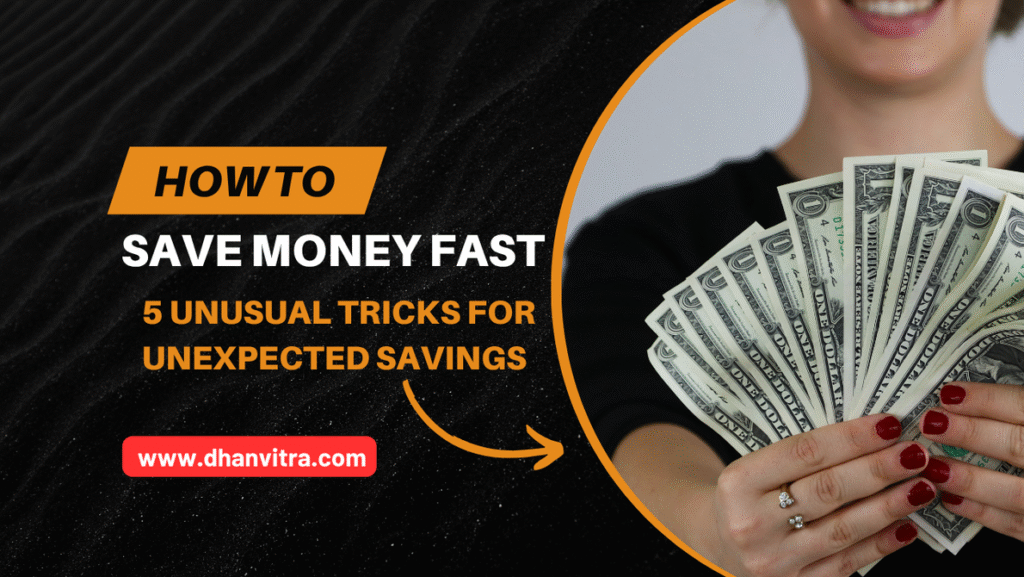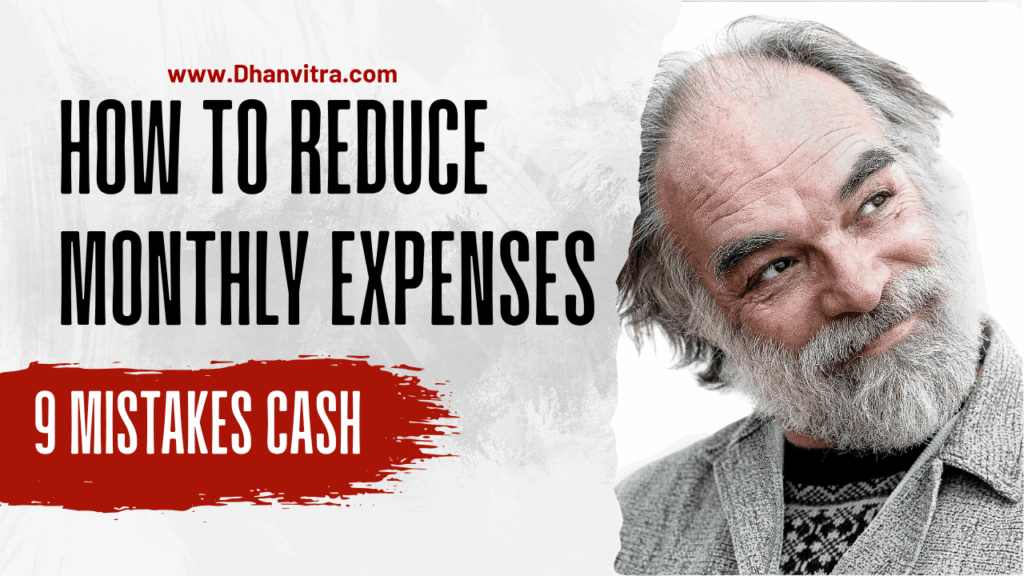
Hey there, savvy shopper! 👋 Welcome to Dhanvitra, your go-to place for simple, practical, and real-world money tips. We believe that managing your money shouldn’t feel like solving a puzzle — it should be easy, fun, and empowering. Whether you’re saving for your next trip, building a safety net, or just trying to stop those “oops” shopping moments, you’re in the right place.
Let’s be honest — we all love a good deal. That little rush when you find something on sale feels amazing, right? But here’s the catch: smart shopping isn’t just about discounts. It’s about making choices that actually help your wallet and your lifestyle.
At Dhanvitra, we talk about the stuff that really matters — how to buy smart, spend wisely, and still enjoy life without guilt. In this blog, we’ll dive into “Smart Shopping Tips: 7 Secrets from Top Finance Experts”, where you’ll learn how to avoid impulse buys, use cashback like a pro, and make every purchase count.
Think of it as your friendly chat with a financially smart buddy who wants to help you get more value from every rupee (or dollar) you spend. Ready to make your money work smarter for you? Let’s get started!
Table of Contents
Secret #1 — Master the 24-Hour Rule
The 24-hour rule is one of the simplest yet most powerful shopping habits ever shared by finance experts. The idea is clear: whenever you feel the urge to buy something non-essential, wait 24 hours before you make the purchase. That’s it. No complicated system, no financial jargon—just time and patience.
Why does this work so well? Because emotions drive many of our spending decisions. You see something shiny online or in a store, and your brain instantly says, “I need this right now.” But if you wait a day, the emotional rush fades, and logic kicks in. Often, you realize you don’t actually need it.
Let’s imagine this: you’re scrolling through your favorite shopping app and spot a trendy jacket. It looks perfect, and your finger hovers over “Buy Now.” But instead of clicking, you decide to sleep on it. The next day, you check again. Suddenly, that “must-have” jacket doesn’t feel so essential. Maybe you already own something similar. Maybe it’s not even your style anymore. That’s the magic of the 24-hour rule—it gives you clarity.
Finance experts love this rule because it saves you from emotional spending traps. It’s a small delay that can lead to huge savings over time. And if you still want the item after 24 hours? Great! That means it’s probably worth it. The rule doesn’t stop you from enjoying what you love—it simply helps you buy with intention, not impulse.
Secret #2 — Create a ‘Needs vs Wants’ List
This one sounds old-school, but it works wonders. Before you shop—online or offline—make two columns: one for “Needs” and another for “Wants.” A “need” is something you can’t live without, like groceries or medicine. A “want” is something that adds comfort or fun, like a fancy coffee or the latest gadget.
Here’s where most people get it wrong. They assume they already know the difference. But when you write it down, it becomes real. Seeing the list forces you to think: “Do I truly need this, or do I just want it right now?” That tiny pause can reshape your spending habits.
Let’s be honest—everyone has wants. And that’s okay. You don’t have to cut them all out. The trick is to balance them. Maybe you promise yourself: “I’ll buy one want for every three needs.” Or “I’ll reward myself with one small want every month.” This kind of personal rule keeps you financially grounded while still feeling satisfied.
What makes this method powerful is awareness. When you start listing your needs and wants regularly, you’ll notice patterns. Maybe you’re spending too much on things that don’t bring real happiness. Maybe you’ll see that your “wants” list changes every week. That realization alone helps you shop smarter.
Finance experts often say that “money leaks through small wants.” The next time you’re about to make a purchase, look at your list. If it falls into the “want” category, pause and ask, “Is this improving my life or just filling a momentary desire?”
Secret #3 — Use Cashback and Reward Programs Wisely
Cashback and rewards can feel like free money—but only if you use them correctly. Many people fall into the trap of spending more just to earn points. That’s the opposite of smart shopping. The real trick is to make these programs work for you, not the other way around.
Start by choosing one or two cashback or reward platforms that align with your regular spending habits. If you travel often, a travel rewards card might make sense. If you buy groceries online, a cashback app can save you real cash every month. The key is to stick with programs that fit your lifestyle—not chase every offer you see.
Now, here’s something most people overlook: always pay your credit card balance in full. Those high-interest rates can wipe out any reward you earn. Imagine getting $10 in cashback but paying $20 in interest. That’s not a win—it’s a loss disguised as a perk.
Also, read the fine print. Some reward programs sound generous but have expiration dates or hidden limits. A cashback app might require a minimum withdrawal, or a loyalty program might cancel points if you’re inactive. Being aware of these small details keeps your rewards safe and useful.
Think of cashback and rewards as bonuses, not income. You shouldn’t spend extra just to get them. Instead, let them complement your usual shopping. It’s like finding an extra note in your wallet after buying what you already needed.
Finance experts agree that when used with discipline, reward programs can be an easy way to stretch your budget. Combine them with the 24-hour rule and your “needs vs wants” list, and you’ll not only shop smarter—you’ll shop like a pro.
Secret #4 — Compare Before You Commit
Before you hit that “Buy Now” button, take a moment — comparison is your secret weapon. Prices for the same product can differ wildly between stores, especially online. One site may offer a “limited-time deal,” but another might quietly sell it for less every day. Comparing prices isn’t just about saving a few dollars; it’s about understanding value.
Think of it this way — if you were buying a flight ticket, would you check only one airline? Of course not! Shopping works the same way. A quick comparison across two or three trusted sites can often reveal big price differences. Many people don’t realize how small markups add up. A few minutes of checking can save you hundreds each year.
There are also great tools out there to make this easy. Price trackers and browser extensions can alert you when prices drop. You can even see price history charts that show if a “sale” is truly a deal or just marketing fluff. The trick is not to rush. Retailers want you to buy fast; smart shoppers take a pause, compare, and commit only when it’s worth it.
So, before you buy your next gadget, sneakers, or skincare product, ask yourself: “Is this really the best price I can get today?” That one question alone can protect your wallet from emotional or lazy spending.
Secret #5 — Buy in Bulk (But Only Smartly)
Buying in bulk sounds like a money-saving dream, right? In many cases, it is. But only if done wisely. Bulk buying makes sense for things you use regularly — like toiletries, cleaning products, or pantry staples. When you buy more, the price per unit drops, and you save over time. But here’s the catch — not everything should be bought in bulk.
Let’s be real. We’ve all bought a huge pack of snacks or drinks “because it was cheaper,” only to find half of it expired before we could finish. That’s not saving — that’s waste. The goal is to bulk-buy what you actually use, not what looks tempting in a giant pack.
Storage also matters. Do you have space to keep all that extra stuff? If not, it can clutter your home and create stress instead of savings. So, before you go all in, do a quick check: “Do I need this often? Can I store it properly?” If the answer is yes, then go ahead — buy it in bulk and enjoy real savings.
And here’s another smart move: team up with a friend or family member to split bulk items. You get the discount without the overload. It’s like getting the best of both worlds — lower prices and zero waste.
Smart bulk buying isn’t about buying more; it’s about buying better.
Secret #6 — Follow Seasonal Sales and Timing
Timing is everything when it comes to shopping. Finance experts often say, “Never pay full price unless you have to.” And they’re right. Almost every product has a “best time” to buy — you just need to know when.
For instance, electronics are often cheapest around major global sale events like Black Friday, Cyber Monday, or back-to-school season. Fashion items? Wait for end-of-season clearances when stores make room for new collections. Even travel tickets and furniture have ideal purchase windows when prices dip naturally.
Think of it like catching a wave — ride it right, and you save big; miss it, and you pay extra. Many shoppers miss these golden opportunities because they don’t plan. But once you start tracking seasonal patterns, shopping gets easier and smarter.
Set reminders for key sales or sign up for alerts from your favorite stores. The goal isn’t to chase every discount — it’s to be strategic. When you know what you want, you can wait for the perfect time to grab it at its lowest price.
The beauty of seasonal shopping is that it turns patience into profit. You’re not depriving yourself; you’re simply buying smarter. Over a year, this habit alone can save you hundreds — even thousands — without changing your lifestyle at all.
Secret #7 — Embrace Minimalism and Value-Based Spending
Let’s be real — the world is filled with “Buy Now” buttons. Every ad, every influencer, every sale wants your attention (and your wallet). But here’s the truth — happiness doesn’t come from owning more things. It comes from owning the right things. That’s where minimalism and value-based spending step in.
Minimalism isn’t about living with one plate and a single pair of jeans. It’s about being mindful. It’s about choosing what adds real value to your life. When you start buying only what truly matters, you automatically spend less and enjoy more.
Think about it. How many times have you bought something because it was trendy, only to forget about it a week later? When you focus on value instead of volume, your decisions become smarter. Instead of buying ten cheap items, you invest in one high-quality product that lasts. It’s not just about saving money — it’s about reducing clutter, stress, and waste.
Value-based spending is simple: ask yourself, Does this purchase align with my goals or happiness? If it doesn’t, skip it. You’ll be amazed at how much lighter and richer your life feels — not just financially, but mentally too. Remember, every dollar you save on things that don’t matter gives you freedom to spend on things that do — like travel, education, or experiences with loved ones.
In short, minimalism isn’t a restriction; it’s liberation. It’s saying “yes” to what truly counts and “no” to what doesn’t.
Bonus Tip — Leverage Technology for Smarter Spending
Technology isn’t just for entertainment — it’s your secret financial assistant if you use it right. From tracking prices to managing your budget, there’s an app for everything. You just need to make it work for you.
Start with price-tracking tools. Websites and browser extensions like Honey or CamelCamelCamel can alert you when prices drop. No more buyer’s remorse for purchasing too early. You can set alerts, compare deals, and save big — without lifting a finger.
Then there are budgeting apps like Mint, YNAB (You Need a Budget), or Goodbudget. These help you see where your money goes each month. Once you see those numbers, you start thinking twice before spending on things that don’t really matter.
AI-based finance assistants can also suggest better deals, detect hidden subscriptions, and even negotiate bills. Imagine saving money while you sleep — that’s how smart tech has become.
The trick is balance. Don’t overload yourself with apps. Choose one or two that fit your style. Use notifications wisely — not every sale is worth chasing. Let technology empower you, not overwhelm you. When used right, it’s like having a finance expert in your pocket.
Conclusion — Smart Shopping Tips
Smart shopping isn’t about being stingy; it’s about being intentional. Every purchase is a small decision that shapes your financial future. When you buy thoughtfully, you save money, reduce stress, and build wealth over time.
Remember, it’s not how much you earn — it’s how wisely you spend. Use the secrets you’ve learned: wait before buying, know your needs, compare prices, and value quality over quantity. Add a dash of tech to help you along the way, and you’ll see the difference almost instantly.
Money saved isn’t just money kept — it’s freedom earned. Freedom to travel, invest, and live life on your own terms. So the next time you shop, ask yourself — Is this making my life richer, or just busier?
FAQs
What’s the best way to control impulsive spending?
Pause before you buy. The 24-hour rule works wonders. If you still want it after a day, go ahead. Most of the time, the desire fades, and you end up saving money effortlessly.
Are cashback programs really worth it?
Yes — if used smartly. Cashback only helps when you buy things you already planned to buy. If it tempts you to spend more, it’s a trap. Think of it as a bonus, not a reason to shop.
How can minimalism save me money?
When you live with less, you stop chasing trends. You buy fewer but better things. That means fewer replacements, less clutter, and more savings for what truly matters — experiences, peace, and purpose.
What are some apps for smart shopping?
Try tools like Honey for coupon codes, CamelCamelCamel for Amazon price tracking, and Mint for budgeting. These apps simplify your decisions and help you shop at the right time and price.
How often should I review my spending habits?
Once a month is perfect. Look at where your money went, spot wasteful habits, and adjust. It’s like a monthly check-up for your wallet — simple but powerful.









